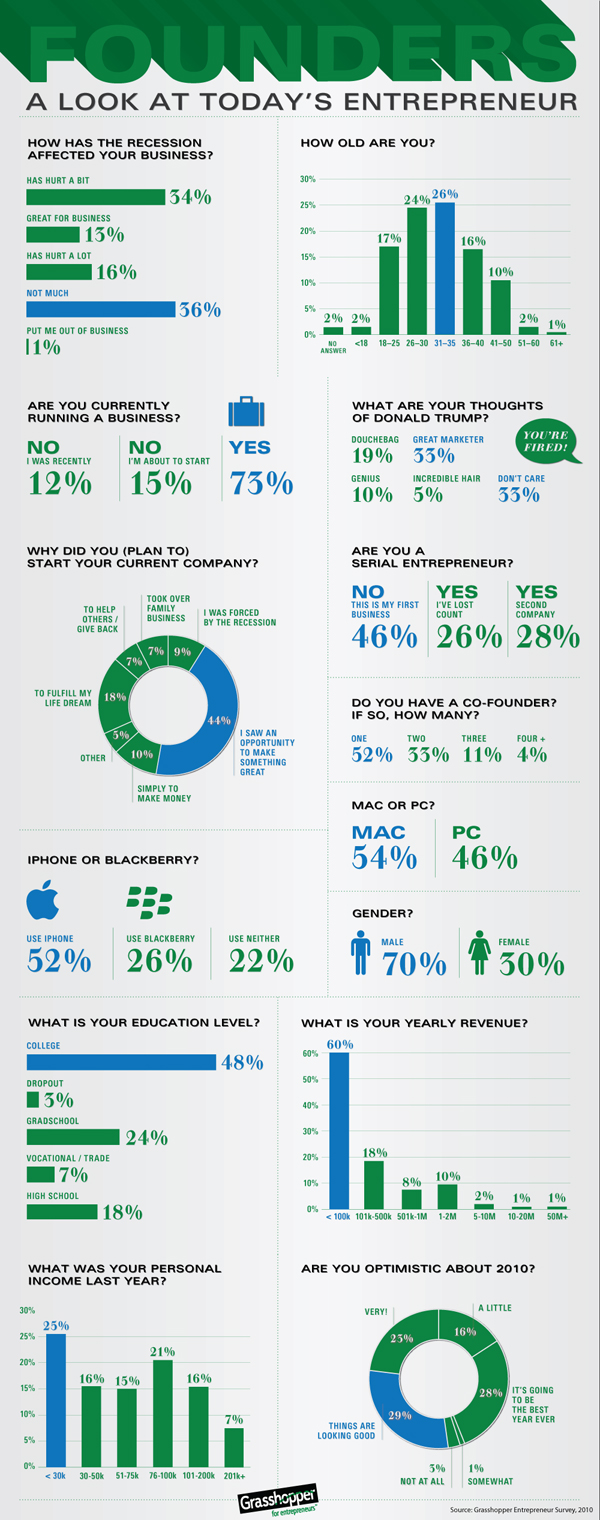April 27th, 2010
A recent research study on consumer decision making found:
“When decisions are difficult because the choices are equally appealing, people often become more positive in their attitudes and behaviors toward their chosen option after they choose it. But the authors found that this enhancement of a product is surprisingly fragile, and collapses easily in the face of even minor negative information about it.”
 This “positivity bubble” (as the researchers describe it) is no surprise to cognitive designers. It comes from our need to get more mental energy out of an interaction then we put in. Making a choice especially between options that are very similar requires a lot of mental energy. To compensate we hype-up the value of the choice we make to create compensating meaning and positive emotional energy. The positivity bubble gives us energy to balance out or exceed what we used in making the decision. As it is primarily hype it bursts at the first sign of conflicting information. This collapse can lead to remorse and long-term dissatisfaction. And this can happen when the stakes are highest. To quote the study:
This “positivity bubble” (as the researchers describe it) is no surprise to cognitive designers. It comes from our need to get more mental energy out of an interaction then we put in. Making a choice especially between options that are very similar requires a lot of mental energy. To compensate we hype-up the value of the choice we make to create compensating meaning and positive emotional energy. The positivity bubble gives us energy to balance out or exceed what we used in making the decision. As it is primarily hype it bursts at the first sign of conflicting information. This collapse can lead to remorse and long-term dissatisfaction. And this can happen when the stakes are highest. To quote the study:
“Difficult decision scenarios with heightened stakes—such as shopping for expensive durable goods, choosing a gift for a loved one, or choosing a job, college, or house—are precisely those in which people would most hope to have accurate and stable attitudes,” the authors write. “Perversely, our results suggest that in these cases their attitudes might actually be the most fragile and bubble-like, appearing strong but actually quite vulnerable to collapse.”
This highlights a moment of truth from a cognitive design standpoint. A case where if we don’t properly manage the psychological need for mental energy we may in fact end up with a bad case of decision remorse. To take a deeper dive check out the article, Fragile Enhancement of Attitudes Following Difficult Decisions.

Posted in Cognitive Bias, Psychographics | No Comments »
April 25th, 2010
 Getting people to think about something specific has powerful cognitive effects. Focusing attention and loading a specific mental model fills our working memory with content and activates episodic memories. This in turn can impact how we perceive, learn, solve problems, plan, navigate and behave. A single word, image or interaction can cause an avalanche of incidental mental processing. This is one thing that makes cognitive design such a powerful intervention. But it can have unexpected side effects.
Getting people to think about something specific has powerful cognitive effects. Focusing attention and loading a specific mental model fills our working memory with content and activates episodic memories. This in turn can impact how we perceive, learn, solve problems, plan, navigate and behave. A single word, image or interaction can cause an avalanche of incidental mental processing. This is one thing that makes cognitive design such a powerful intervention. But it can have unexpected side effects.
A great example was just published in Psychological Science, as You are What You Eat: Fast Food and Inpatients. To quote:
“We found that even an unconscious exposure to fast-food symbols can automatically increase participants’ reading speed when they are under no time pressure and that thinking about fast food increases preferences for time-saving products while there are potentially many other product dimensions to consider. More strikingly, we found that mere exposure to fast-food symbols reduced people’s willingness to save and led them to prefer immediate gain over greater future return, ultimately harming their economic interest.”
 This means that merely flashing the logo of the golden arches can cause a booting up of a “fast food” mental model that incidentally but powerfully alters seemingly unrelated reading speed, decision-making and behavior. And this is true for more than fast food….
This means that merely flashing the logo of the golden arches can cause a booting up of a “fast food” mental model that incidentally but powerfully alters seemingly unrelated reading speed, decision-making and behavior. And this is true for more than fast food….

Posted in Psychographics, Technique | 6 Comments »
April 24th, 2010
Mindgate Media is running a Show and Teach Contest for educators, graduate students and librarians. They want the videos you use in college-level classes along with a teaching note and offer up to $2000 in prize money.
Although the judging criteria is vague, I suspect the video and teaching note with the greatest cognitive impact will win the prize.

Posted in Events | No Comments »
April 23rd, 2010
 Leaders from Facebook made some interesting announcements at F8 earlier this week. F8 is Facebook’s annual event for developers and entrepreneurs that are building the social web. The big news is that Facebook has improved their development platform and social plugins. Called Open Graph API, it promises to deliver a frictionless, semantically-rich, intelligent, personalized and of course social interaction wherever you go on the web. In essence it lets any page on the web have the functionality of a Facebook page. This could realign the web to be people-centric rather than content-centric.
Leaders from Facebook made some interesting announcements at F8 earlier this week. F8 is Facebook’s annual event for developers and entrepreneurs that are building the social web. The big news is that Facebook has improved their development platform and social plugins. Called Open Graph API, it promises to deliver a frictionless, semantically-rich, intelligent, personalized and of course social interaction wherever you go on the web. In essence it lets any page on the web have the functionality of a Facebook page. This could realign the web to be people-centric rather than content-centric.
Functionality that is dripping with cognitive design implications!
Given Facebook’s 500M strong user base this might revolutionize the web. For commentary to that effect check out the post, In Quiet Coup, Facebook Takes Over the Web. A good introduction to the Open Graph can be found in this somewhat lengthy video of the keynote address.

Posted in Service Innovation | No Comments »
April 21st, 2010
 The MIT Enterprise Forum of Chicago has issued a final call for the 2010 Whiteboard Challenge. You have to submit an idea online (max 400 words) by April 23rd 5pm CT. The finalists give a 5-minute whiteboard presentation. Prizes are $3K, $1.5K and $0.5K but the intangible value is far higher.
The MIT Enterprise Forum of Chicago has issued a final call for the 2010 Whiteboard Challenge. You have to submit an idea online (max 400 words) by April 23rd 5pm CT. The finalists give a 5-minute whiteboard presentation. Prizes are $3K, $1.5K and $0.5K but the intangible value is far higher.
2009 winning ideas included:
1ST: System that gives cerebral palsy patients an incentive to stand up straight. 2ND: Necklace and online social networking website for Tweens. 3RD: Portion-controlled dinnerware for diabetics and the health conscious.
Go here for a blog post detailing the 2009 event.

Posted in Design, Events | No Comments »
April 20th, 2010
 One theme I hit hard in my courses and workshops is that cognitive design is about optimizing the behavior of artifacts for how mindS work. I emphasize the “S” in minds because there are in fact five types of minds – individual, extended, group, emergent and machine- that we can design for. Missing this point is a common error that leads to poor cognitive design. We typically design for the “mind of the user” ending up overloading them or considering far too few options for how to meet their cognitive needs. We most of course focus on the “minds of the user” but we can best do so by understanding how the other types of minds fit into the picture.
One theme I hit hard in my courses and workshops is that cognitive design is about optimizing the behavior of artifacts for how mindS work. I emphasize the “S” in minds because there are in fact five types of minds – individual, extended, group, emergent and machine- that we can design for. Missing this point is a common error that leads to poor cognitive design. We typically design for the “mind of the user” ending up overloading them or considering far too few options for how to meet their cognitive needs. We most of course focus on the “minds of the user” but we can best do so by understanding how the other types of minds fit into the picture.
So I am always on the look out for new design options and tools that make us aware that we can offload or reconfigure some of the individual’s cognition onto other artifacts. An interesting example is Geminoid F, a life-like remotely controlled robot developed at the Intelligent Robotics Laboratory in Japan.

For additional photos and videos check out this post on the Pink Tentacle. Although not artificially intelligent, Geminoid F could open up many robotic applications in the service industries. She certainly raises interesting cognitive design issues. Don’t think you can buy one yet but the projected cost is 10 million Yen or about $108,000.

Posted in Service Innovation | 1 Comment »
April 19th, 2010
Posted in Psychographics | No Comments »
April 16th, 2010
 Getting folks with diabetes to regularly monitor their blood glucose level is a major design challenge, especially for children. Why not make it fun and exciting to do? That is what DIDGET a relatively new blood glucose monitoring device promises to do.
Getting folks with diabetes to regularly monitor their blood glucose level is a major design challenge, especially for children. Why not make it fun and exciting to do? That is what DIDGET a relatively new blood glucose monitoring device promises to do.
The monitor docks with a Nintendo DS gaming system and converts glucose monitoring results into points. With the points you unlock new levels and buy items in the game. You are rewarded just for monitoring and even more for keep your glucose in the right range. In principle, this is a cognitive design master stroke!

Posted in Behavior Change, Examples, Service Innovation | No Comments »
April 14th, 2010
 Dan Heath has an interesting post on Fast Company that talks about how a crazy rumor about Snapple supporting the KKK caught on. Here is the scoop:
Dan Heath has an interesting post on Fast Company that talks about how a crazy rumor about Snapple supporting the KKK caught on. Here is the scoop:
”But the rumor kept spreading because it had some “evidence” on its side. People would say, “Look at the label—there’s an old wooden slave ship on the front. And on the back there’s a weird K with a circle around it—that’s the sign of the Klan.” And sure enough, if you looked, you’d see a ship and a circled K, and maybe you’d start to wonder. But the reality is less scary: The old wooden ship was a depiction of the Boston Tea Party—get it, Snapple Tea, Boston Tea Party? And what about the K with a circle around it? Well, it doesn’t mean “Klan.” It means “Kosher.” Whoops.”
Strong medicine for the cognitive designer. I’ve seen it work many times. If you can make it easy for people to discover important, interesting or provocative things by themselves, you have produce a powerful cognitive effect.

Posted in Technique | 3 Comments »
April 13th, 2010
 Check out Kelly McGonigal’s blog, Science of Willpower: Secretes for Self-Control without the Suffering. She is a mind-body psychologist and health educator at Standford. She teaches Psychology 205, a very popular course on the science of willpower.
Check out Kelly McGonigal’s blog, Science of Willpower: Secretes for Self-Control without the Suffering. She is a mind-body psychologist and health educator at Standford. She teaches Psychology 205, a very popular course on the science of willpower.
Her blog is filled with posts that should be of interest to cognitive designers working on problems in self-regulation and behavior change. Take for example the post, New Research Roundup on Contributing Factors in Obesity. She looks at three factors including:
This article by Olivia Judson details several recent studies showing how the body shuts down when you sit down. Sit at a desk all day, or watch three hours of TV at night, and it doesn’t even matter if you squeeze in an hour of exercise. A full hour! Every day! It’s not enough to counter the metabolic disaster of being sedentary the rest of the day. That’s right, even people trying to do the right thing have the deck stacked against them.
This has clear and novel implications for anyone designing obesity management programs.

Posted in Behavior Change, Examples | No Comments »
 This “positivity bubble” (as the researchers describe it) is no surprise to cognitive designers. It comes from our need to get more mental energy out of an interaction then we put in. Making a choice especially between options that are very similar requires a lot of mental energy. To compensate we hype-up the value of the choice we make to create compensating meaning and positive emotional energy. The positivity bubble gives us energy to balance out or exceed what we used in making the decision. As it is primarily hype it bursts at the first sign of conflicting information. This collapse can lead to remorse and long-term dissatisfaction. And this can happen when the stakes are highest. To quote the study:
This “positivity bubble” (as the researchers describe it) is no surprise to cognitive designers. It comes from our need to get more mental energy out of an interaction then we put in. Making a choice especially between options that are very similar requires a lot of mental energy. To compensate we hype-up the value of the choice we make to create compensating meaning and positive emotional energy. The positivity bubble gives us energy to balance out or exceed what we used in making the decision. As it is primarily hype it bursts at the first sign of conflicting information. This collapse can lead to remorse and long-term dissatisfaction. And this can happen when the stakes are highest. To quote the study:









